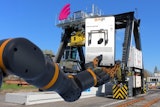Mobility continues to be the hottest trend for the semiconductor and electronics industry. As though there were any need for supporting data, the major electronics shows from the first quarter of 2013 displayed and demoed the latest array of mobile devices. However, perhaps the most noteworthy disruption to these events was their overt focus on the importance of the critical aspect for mobility: the components within these devices.
Chips get smart
This year's focus is noticeably rooted in the significant improvements to chip architectures that are developing as mobile users increasingly demand richer functionality with greater processing power and anywhere, anytime connectivity with longer battery life. The answer to these demands is coming in increasingly complex and compact architectures, as the market power of smart wireless devices (SWDs) drives the industry and the entire supply chain, from research and development investments (R&D) to CAPEX and end-product differentiation. Importantly, the powerful market drivers of mobility are not limited to just a couple of market sectors, such as consumer electronics (CE) or enterprise "Bring Your Own Device" (BYOD) trends. Rather, today's growing mobility trend, as the SWD evolution has been called, spans the full range of the electronics industry, from automotive to CE and enterprise computing, and from communications and networking to medical electronics.
One strong forecast for the demand surge for smart mobile capability was recently reported by IDC. IDC's recent growth estimates for smartphones and tablets forecast an increase of 61 percent — or 500 million units — from 2012 to 2014, and another 25 percent increase — or 300 million units — from 2014 to 2016. Confirming these growth trajectories, leading OEMs, notably IBM in its recent fab future discussion, offer insight into the sheer number-power of mobile as a driving force for revenue and, more importantly, into tracking the direction of component and chip-level architecture.
Driving chip changes
Beyond power efficiency, which is critically moving to address increasing demands by all users for improved device battery life, are the improvements in chip design leveraging versatile System-on-Chip (SoC) capabilities to maximize end-product applications — that is, faster, lighter, smaller, highly-integrated, and more efficient devices, regardless of end-market.
Understanding the significant and disruptive effect on new chip architectural designs and the commoditization of mobile chips requires understanding what "mobility" means to a user and how that change in use is influencing the very architecture of not only chips, but of the semiconductor industry as well. Mobile devices are where market demand and focus are and are likely to stay at least through the decade. The advances thus far in SWDs have pushed the expectation for seamless and constant connectivity into a growing range of devices. At the same time, these growing user expectations, combined with the changes in device capability, are pushing data transmission levels to extremes and challenging carriers and cloud service providers to meet surging demand.
For the supply chain, the focus on System on Chip (SoC) and System in Package (SiP) designs to provide highly-integrated solutions offers a boost for Original Design Manufacturers (ODMs), as well as for component manufacturers looking to provide the best (sub-)component solutions. Additionally, expanded connectivity — given the focus on solutions for mobile devices — also speaks to increased supply chain activity for the networking, communications design, and server sectors. The driving reason for this is the increased data-rich machine-to-machine (M2M) traffic that is at the heart of the demands for improved mobile device functionality and features.
Strong synergies point to growth
Where are these design changes and market strategies leading us? At the forefront is a new, commoditizing era for SoCs. Given the design requirements for mobile solutions, and given the decline and shift away from hardware and firmware solutions for PCs due to end-device declines, the opportunity and the strategic business value to push SoC designs into more flexible, more commoditized levels are dawning.
What can we forecast for supply chain growth in 2013 in light of the focus of these important showcasing events? The indications are squarely on the continued rise of M2M connectivity, data transfer, and broadening of the mobile device growth wave, with dedicated strategies for emerging markets. As users demand and push for the expansion of present connectivity to realize ubiquitous computing, or a truer Internet of Things (IoT), increased commoditization of chip architectures that support improved, "smarter," mobile devices will continue. This expansion will encompass many points along the semiconductor and electronics supply chain, including Big Data storage, networking equipment, communications base stations, M2M solutions, and a plethora of devices and components necessary to realize IoT.
Connectivity is a core driver for today's semiconductor and electronics industry. The ability to personalize and increase the efficiency of activities through highly-individualized, anywhere, anytime M2M interactions is changing everything from infrastructures to networks, and from devices to chip architectures. These changes are catalysts for exciting new growth and innovation with greater market sector reach than our industry has seen in a while. The thanks go to the disruptive change that smart wireless devices brought along, and to how users and innovators alike have envisioned their new capabilities and functionality.
In sum, the biggest news thus far this year is not a single, hot device, chip or architecture. Rather, what is striking and utterly exciting is seeing that IoT is actually, finally within reach, and recognizing that the reach of this next phase of growth for both hardware and IT alike is significant for the wider global supply chain. The solutions are not just about business and social connectivity. The reality of M2M IoT is that it spans verticals as inclusively as it spans the semi supply chain.
Mark Bollinger joined Smith & Associates in 2000 to build Smith's business development team, and now heads marketing. Mark was formerly with the Federal Communications Commission (1993-2000), where he managed the wireless telecommunications spectrum auction program. He received his B.A. from William Jewell College and his J.D. from the University of Missouri School of Law.























